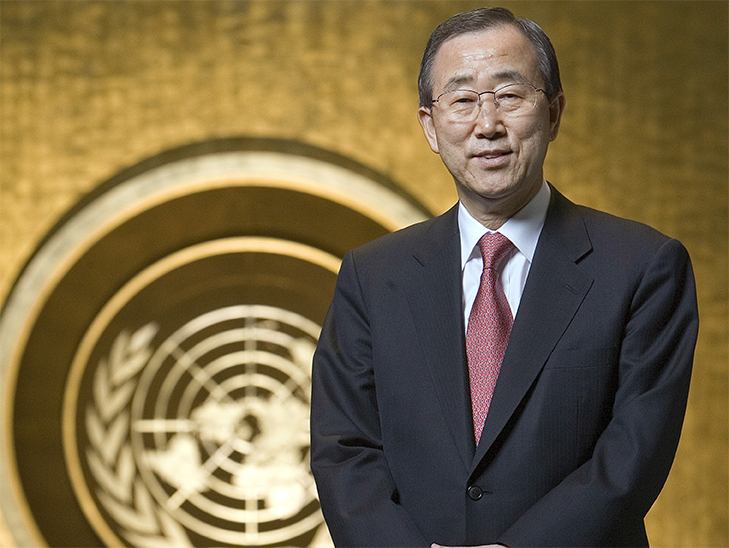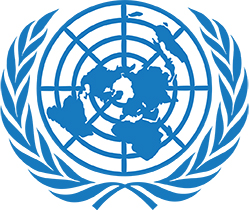The UN Secretary-General’s message to UNESCO MGIEP on preventing violent extremism

 Violent extremism is a direct assault on the United Nations Charter and a grave threat to international peace and security. Terrorist groups have brazenly kidnapped young girls, systematically denied women’s rights, destroyed cultural institutions, beheaded journalists, warped the peaceful values of religions and brutally murdered thousands of innocents around the world. These groups have become a magnet for foreign terrorist fighters.
Violent extremism is a direct assault on the United Nations Charter and a grave threat to international peace and security. Terrorist groups have brazenly kidnapped young girls, systematically denied women’s rights, destroyed cultural institutions, beheaded journalists, warped the peaceful values of religions and brutally murdered thousands of innocents around the world. These groups have become a magnet for foreign terrorist fighters.
Addressing this challenge requires a unified response, and compels us to act in a way that solves, rather than multiplies, the problem. Many years of experience have proven that short-sighted policies, failed leadership, heavy-handed approaches, a focus only on security measures and a disregard for human rights have often made things worse. We need cool heads and common sense, and must never be ruled by fear — or provoked by those who strive to exploit it. Countering violent extremism and terrorism should not be counter-productive. It should also start with prevention.
With that in mind, in January of this year I presented to the United Nations General Assembly a Plan of Action to Prevent Violent Extremism, which takes a practical and comprehensive approach. The Plan puts forward more than 70 recommendations for concerted action at the global, regional and national levels.
…extremism flourishes when human rights are violated… and people – especially young people – lack prospects and meaning in their lives.
We must pay particular attention to addressing the drivers of violent extremism. There is no single pathway to violent extremism. But we know that extremism flourishes when human rights are violated, political space is shrunk, aspirations for inclusion are ignored, and people — especially young people — lack prospects and meaning in their lives.
We also know the critical elements for success: good governance, the rule of law, political participation, decent jobs and quality education. We must promote cultural literacy, and celebrate what makes us different while defending human rights for all. We must reject prejudice, and the all-too-frequent impulse to see others as potential threats.
The UN Plan of Action calls not just for quality education, but for schooling that emphasizes dialogue, teaches respect for diversity, fosters critical thinking, promotes media and digital literacy, and helps young people to develop the behavioural and socioemotional skills that can contribute to peaceful coexistence and tolerance. I continue to urge Member States to support young women and men by investing in education, including technical and vocational education; by ensuring that education matches skills with the needs of labour markets; and by building the capacity of teachers and educators to support this agenda.
Beyond skills, we must also focus on values. We know that youth may be vulnerable to the lure of terrorists, who offer them a sense of belonging, perhaps a salary and even a supposed chance at glory. Education steeped in universal values can help show the utter emptiness of such promises, and help young people to discern the truth.
The United Nations Security Council recognized the value of young people as peacebuilders in its historic resolution 2250 of December 2015. This resolution opens up new opportunities for the engagement of young people, much as Security Council Resolution 1325 (2000) advanced the involvement of women in the maintenance of international peace and security. Instead of viewing young people as part of the problem, we must harness their immense potential to be part of the solutions.
In today’s world, young people have superior communication skills, extensive social media networks and, often, more influential voices than their elders. If we are to prevent violent extremism, we have to motivate and mobilize this generation of youth – the largest in history – to amplify our messages of common humanity. When we give young people the education that all deserve, along with avenues and arenas for action, they will see hope.
I thank the Mahatma Gandhi Institute of Education for Peace and Sustainable Development for its important contributions to this work. The United Nations looks forward to deepening our partnership in our shared work for peace and prosperity for all on a healthy planet.
-
 Waging peace in the classroom: Teaching respect and appreciation for diversity in a globalized worldMessage by
Waging peace in the classroom: Teaching respect and appreciation for diversity in a globalized worldMessage by
Prof. Anantha Duraiappah,
Director of UNESCO MGIEP -
 Foreword by Ban Ki-moon,
Foreword by Ban Ki-moon,
UN Secretary-General
-
 Opinion: Irina Bokova, Director-General of UNESCO
Opinion: Irina Bokova, Director-General of UNESCO
-
 Opinion: Professor K.P. Mohanan, Indian Institute of Science Education and Research, Pune
Opinion: Professor K.P. Mohanan, Indian Institute of Science Education and Research, Pune -
 Opinion: Herman Deparice-Okomba, Centre for the Prevention of Radicalization Leading to Violence
Opinion: Herman Deparice-Okomba, Centre for the Prevention of Radicalization Leading to Violence -
 TAG 2016 : Violent Extremism and Education
TAG 2016 : Violent Extremism and Education -
 Interview with Prof. Sugata Mitra, award-winning social entrepreneur
Interview with Prof. Sugata Mitra, award-winning social entrepreneur
-
 Feature by Dr. Yoko Mochizuki and
Feature by Dr. Yoko Mochizuki and
Gauri Khanduja
-
 Feature by Dr. Mathangi
Feature by Dr. Mathangi
Subramanian, Geetika Dang and
Anamika Gupta -
 UNESCO MGIEP's Knowledge Commons
UNESCO MGIEP's Knowledge Commons -
 Photo Essay by Sara Hylton
Photo Essay by Sara Hylton
-
 Solutions to the Crossword posted in The Blue Dot Magazine, Issue 4
Solutions to the Crossword posted in The Blue Dot Magazine, Issue 4






